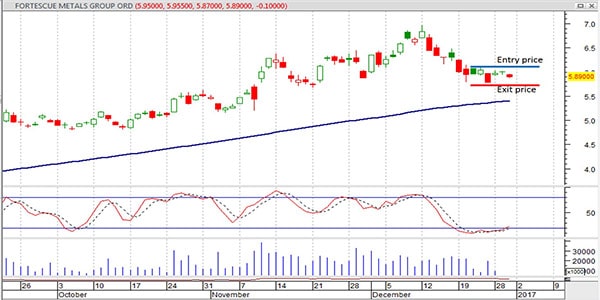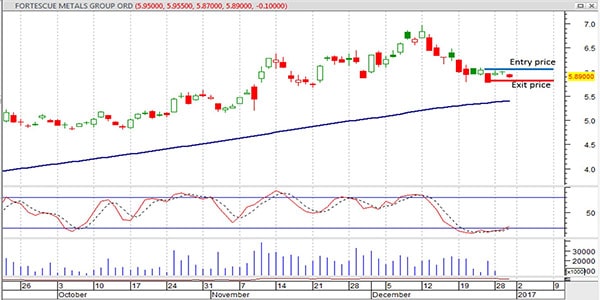
Strategy 1 and 2 are widely covered in most trading books and articles, so let’s take a look at strategy three in more detail, which comes down to position sizing secrets.
Van Tharp, in his excellent book “Trade Your Way to Financial Freedom”, addresses the issue of risk management or as he calls it position sizing.
It is accepted in the trading world that the maximum amount of capital you can risk on any trade is 2%.
This means that if you have capital of $50,000, the maximum you should lose on any trade is 2% of $50,000 or $1000.
What is the best Position Sizing Method?
Van Tharp compares a number of different methods for calculating the position size or parcel size to use.
He selects some shares and trades $1,000,000 in and out of these stocks over a five-year period. Note all of the different models look at the same trades. The only thing that changes is the amount of money on each trade.
The results are as follows:
- 1st Model: Buy 100 shares of every trade Profit: $32,567
- 2nd Model: Buy 100 shares/$100,000 capital Profit: $237,457
- 3rd Model: Place 3% of our capital in each trade Profit: $231,121
- 4th Model: Risk 1% of our capital in each trade Profit: $1,840,493
- 5th Model: Limit losses to 0.5% of volatility (using ATR) Profit: $2,109,266
The difference between these models is dramatic!
A variation of model 3 is what most people would be using to approach the market, placing 10% of their capital into a trade. This will give better results than model 3 but still will not approach the results that are achieved in model 4 or 5.
In model 3, if we have $50,000 in capital we place $5,000 on each trade. We then limit our loss to 10%, which can be achieved by using a stop loss at 3-7% and allowing for brokerage and slippage. This means that if the trade goes wrong, we stand to lose a maximum of 10% of our parcel or $500.
A more advanced strategy is looked at in detail below. This strategy is based on calculating the risk on each trade or Model 4 outlined by Van Tharp above. Here we take into account where we enter the trade and where we will exit if the trade goes wrong.
To use this model, we plan where we get into the trade and where to get out if the trade goes wrong. The potential loss is then calculated, and the amount of capital we can place on any trade is then worked out.
Take our total capital of $50,000 and let us risk 1% of this on any trade. This means that if the trade goes wrong, we will lose a maximum of $500.
Let's have a look at an example trade – FMG
Looking at the example chart below we will calculate the risk for a trade on Fortescue Metals (FMG).
Our entry point is $6.10. If the trade goes wrong, we'll look to exit at $5.79. The maximum loss that we will take on this trade is 31 cents plus slippage and brokerage.
Let’s allow slippage of 2 cents and brokerage of $20 per trade. The example chart below has been updated for 2017.

Chart courtesy of Metastock
- Maximum acceptable loss is $500
- Brokerage is $20
- Maximum loss between entry and exit is $480
- The difference between entry price and exit price, including slippage $0.33
- Number of shares to trade = 480/0.33 which equals 1454. We'll round it down to 1450 share CFDs.
In this example, we can place around $8,845 (1450x$6.10) in the trade and stay within our risk tolerance.
If we were to place more than this on the trade, then we would be exceeding our acceptable risk.
Tighter stops mean more on the trade with the same risk
Let’s consider that we were prepared to use closer exit if the trade goes wrong. We'll set our entry point at $6.02 and our exit point at $5.85. Slippage and brokerage remain the same as before at 2 cents and $20. This time we will lose a maximum of 19 cents if the trade goes wrong.

Chart courtesy of Metastock
- Maximum acceptable loss is $500
- Brokerage is $20
- Maximum loss between entry and exit is $480
- The difference between entry price and exit price, including slippage $0.19
- Parcel size permitted = 480/0.19 which equals 2526 share CFDs, which we'll round to 2500.
We can now place a parcel of $15,025 (2,500×6.02) on the trade. As you will notice, this is a much larger parcel, but we are taking the same risk if the trade goes wrong.
Now that we have an understanding of how to calculate and manage our risk, the big question is why does this work? Why is this strategy so effective?
The reason for this is we never know if a trade will go in our favour or not.
When we are winning, our risk per trade stays the same at 1% of our trading capital, but we have more shares. This allows us to compound our profits when we are winning.
When we are losing, we continue to risk 1% of our capital, but our base is getting smaller. So if our capital went to $40,000, then 1% risk would be $400.
So now we'd still be risking only 1%, but our capital on the trade would be smaller. It will take much longer to reduce our trading capital.
Learning to place the maximum on a trade without increasing your risk
This allows us to place a maximum amount onto each trade while fixing our downside. With the equal position size model, we do not maximise our parcel size as it remains constant regardless of the risk on a particular trade.
It is important to note that if you follow the 2% rule, religiously you could have 100 losing trades and still have some money left.
Most traders risk far too much on a trade, and many can get caught out in a dramatic move against them.
By applying the position sizing secrets (the 2% rule) mentioned in our examples above, you stand to be alive on a losing streak and maximise your opportunities when winning.
People Who Read This Also Viewed:




